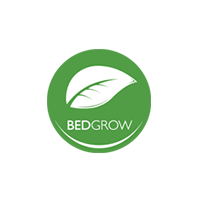Bedgrow or Bedfordshire Farming cooperative started as a group of like-minded growers in 1963, taking advantage of Bedfordshire’s rich and fertile soils. With core respect, customer-first values, and an exceptional focus on quality, they grow, store, and package fresh produce for supermarkets all over the United Kingdom.
Bedgrow joins the future of maintenance with MaintMaster
Staying competitive increases their need for innovation – and great maintenance. They can’t afford breakdowns with a fleet of machines ranging from packing machines and forklifts to all other machines for handling vegetables. And they must comply with the latest food and H&S regulations.
Yet, their maintenance management was outdated, according to Geoff Kynaston-Stear, H&S Manager at Bedgrow. To keep up with customer and inspection demands, they needed a new solution built for maintenance.
From 1963 to 2022
When asking Geoff about the initial problems causing them to seek better solutions, he immediately responds, “pen and paper.” Coupled with the fact that they didn’t have a robust maintenance plan, Bedgrow struggled with getting on top of the important statutory inspections – and more.
As a food company with many supermarket-type customers, they were a constant target for rigorous audits. With pen and paper, proving they were maintaining their machinery to the right standard was difficult. They risked missing important things because their paper system largely relied on people remembering to do things – and machinery repairs were largely reactive.
Their previous way of working was, in their words, cumbersome and dysfunctional, and with the realization that it was 2022, not 1963, they knew they needed to drag themselves into this century. And as Bedgrow hired new people, they started hearing about new solutions they had never used.
The expensive chock of other solutions
Bedgrow’s journey towards finding a new digital maintenance solution started with their Managing Director, Stephen Hedderly, who pushed to find a new and better solution. The first suggested solution was Pirana CMMS.
Geoff and engineer manager Barry Stroud got the main responsibility of trying the new solution. After a 30-day CMMS trial and many meetings with their sales team, both felt let down by a high level of unhelpfulness. It was also inflexible and very expensive.
Extending the trial for just one day costs hundreds of pounds extra. Same with migrating the solution from trial to paid. Reporting? Same. And the mobile app – 700 pounds extra.
In the meantime, they searched for other CMMS solutions on Google and found one that caught their interest – MaintMaster. After testing the MaintMaster trial and talking with the sales and support team, they realized it was the complete opposite experience to Pirana.
They delivered the feedback to the Managing Director.
“Rightly so, he was asking us some difficult questions. But there was no decision to make, it was what we obviously needed to do. But he took our advice because he wasn’t involved in the day-to-day. He wanted to know that it did what it needed to do and was cost-effective.”
Complete flexibility. And everything was included in the price.
The Managing Director didn’t need convincing at all.
Choosing MaintMaster was a no-brainer
MaintMaster was far simpler, more flexible, and had much better value for money. They also felt the training was far ahead of what the Pirana system offered. As the days and weeks went on, Bedgrow says MaintMaster proved it. All the integration, support and training were easy to implement with great support to back it up – at a cost less than the initial Shire system.
Bedgrow also found MaintMasters maintenance system as intuitive to use and easy to put details and create schedules in. Three engineers use it for recording breakdowns and improvements and planned preventive maintenance – and they all found it works great on both tablets and PC.
They particularly liked that MaintMaster is easy to modify for their use. They like that they can modify the PPM schedule to suit their needs with necessary inspections.
“With our previous solution, it obviously would cost us a lot of money to change anything. They wanted us to work to their system. Your system will work to whatever we want. It’s so versatile that we can basically make it do anything.”
Another thing they liked about MaintMaster is that there aren’t bits and pieces they don’t need. With Shire, they paid for functionality they would never use. Geoff says, “with MaintMaster, we pay but get far more than we’re paying for.”
He adds, “I’m trying to think of something bad with MaintMaster, but I can’t find it.”
Another influential factor he mentions is the attitude of the people they spoke to – an important display of a company’s core ethics. According to him, The Shire people saw themselves as the important part of the discussion. They felt as if they were someone they would take money from — no flexibility or helpfulness.
MaintMaster was the complete opposite – Geoff says they couldn’t be more helpful. When it came to it, their decision to choose MaintMaster was, as the brits say, a no-brainer.
From paper to digital
MaintMaster presented the implementation as a project with clear and useful steps. The help was always a quick ring or meeting away if they had issues. They felt secure knowing they had access to reassuring support.
“If we have any questions, they answer straight away. It’s brilliant. In all our interactions, it’s only been once she said leave a question and I’ll come back with the answer. Everything else, they know by heart.”
The forms are an important part of Bedgrow’s maintenance work. Integrating their old forms and creating new ones was critical to the implementation. Because there was an overlap between digital and paper, they needed control documents, production line forms and more into the system – all of which now live as integrated links in MaintMaster.
Getting their data into MaintMaster was done manually for the most part, as 99% of it was on paper. Barry oversaw the process and spent time interpreting if the data was valuable or not – and if it was worth migrating into the system.
The final 1% of all the data could be imported from Excel files into MaintMaster, which Mitch Field was responsible for. As soon as he understood how the data had to be laid out for MaintMaster to read, it was easy.
Bedgrow’s engineering teams use MaintMasters maintenance software in statutory, health and safety, and more areas. They’re also using the mobile app and currently configuring it to make it as simple to use as possible.
The now and the future
Now that everything is in the system, they no longer miss important information and tasks. The system tells them what to do. Currently, they’re working on training their machine operators to enter faults and other information into the system. The next phase is ensuring they have simple access to simplify report creation.
Another thing in the works is starting to use the reporting functionality fully. According to Geoff, the reasons are two-fold: one, to see how the organization is doing, and two, to show the rest of the business they’re constrained by their decision. They find it useful to get people to agree to spend money on important matters.
And because statutory for things like their pressure vessels, lifting equipment, and other categories is a critical part of what they do, they are responsible for ensuring everything’s tested at certain intervals. Because MaintMaster allows them to program these tests, they ensure they get notified in good time – which removes the risk that they might miss something.
In health and safety, they found MaintMaster maintenance software to be an excellent tool for creating hazard reports, something they didn’t consider before. And now, with Britain outside the EU due to Brexit, they have their own certifications equivalent to the CE mark. They never thought that was possible either – but they now use MaintMaster to log all these changes.
Bedgrow set themselves a year to get MaintMaster completely implemented. Geoff says that while it sounds like a long time, they had a lot of data they needed to get into the system. And more, like designing the forms they will need. After starting, they’re anticipating a fully-functioning system that does everything they want it to next year – and they’ll always work to improve it.
Do you want to learn about the basics of a CMMS?






